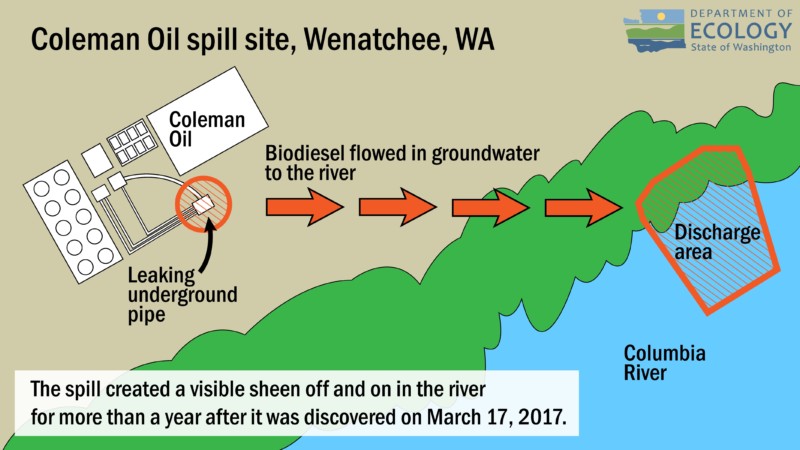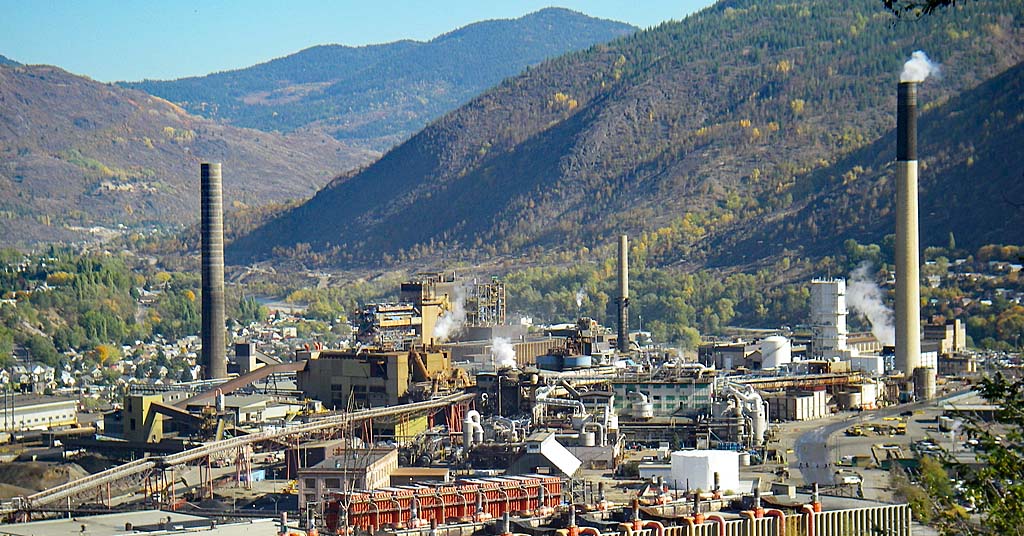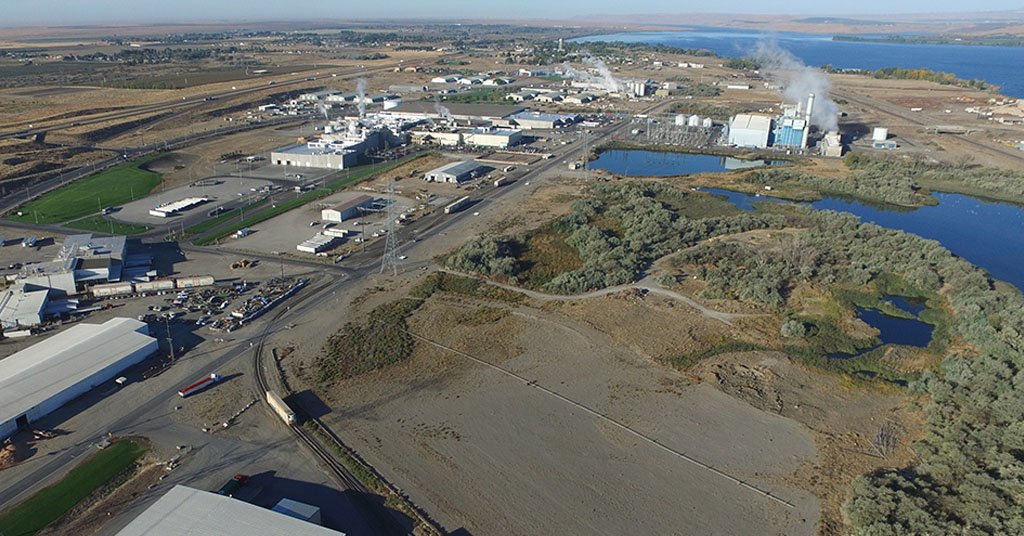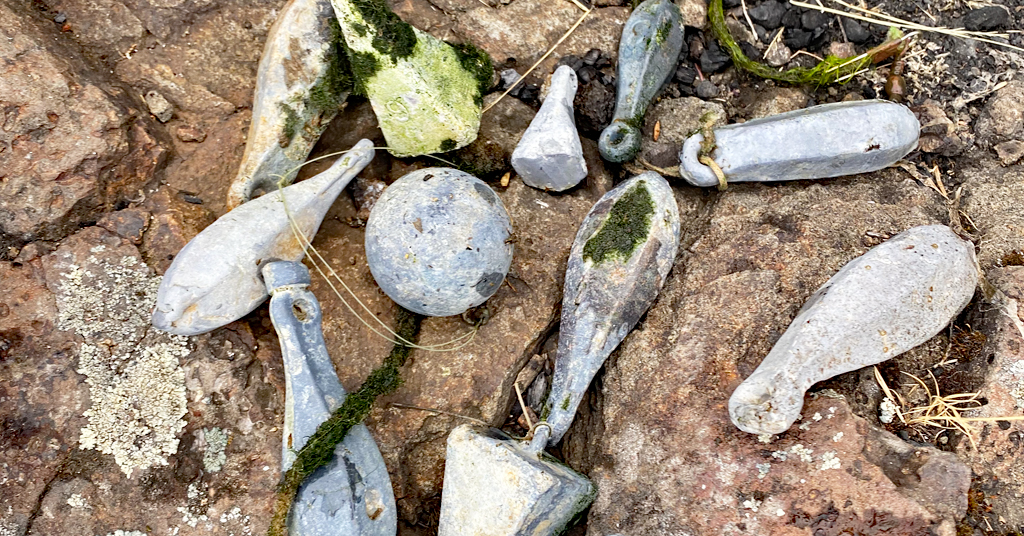Dec. 6, 2018. A Lewiston-based fuel retailer faces at least $189,000 in fines for spilling biodiesel into the Columbia River. According to the Washington State Department of Ecology, which also seeks $213,400 in reimbursement for costs related to spill response, Coleman Oil’s negligence allowed 3,840 gallons of biodiesel to leak from a corroded underground pipe at its storage facility in Wenatchee.
The Department says the unchecked leak contaminated nearby soil and groundwater, eventually making its way into the Columbia and “creating a visible sheen” on the river’s surface. Although the fines were levied on Nov. 27, Department of Ecology spokeswoman Sandy Howard says the oily sheen was initially reported by a member of the public on St. Patrick’s Day of last year.
Howard says it only took a few days for lab results to reveal the source of the sheen as biodiesel. The spill response team was then able to trace the product to a 20,000 gallon above-ground storage tank at the Coleman Oil facility, which is situated only a block away from the Columbia at 3 Chehalis St. “We found that Coleman Oil was the only facility in town that was selling biodiesel, so it was a pretty easy answer once we found out what type the fuel was,” she explains.
Howard says the company has been very cooperative in the clean-up process that is still underway.
In the 21 months since that process began, Coleman Oil’s Operations Manager Jim Cach has coordinated what he calls a “vigorous response to the release”.
In addition to maintaining the absorbent booms and curtains that are still deployed on the river’s surface, “we moved all the fuel from the bulk plant,” Cach says, “and all those plants have been decommissioned. We demolished and removed three buildings to make it easier to try and chase the path of where this fuel is going. We’ve excavated and disposed of approximately 750 tons of impacted soil, and we’ve installed 38 monitoring and recovery wells.”
“To date,” he continues, “we’ve spent approximately $2.6 million on environmental remediation and investigation.”
And that figure, which doesn’t include the fines imposed last week, is likely to grow, as the area surrounding 3 Chehalis St. is still considered a toxic cleanup site by the Environmental Protection Agency. The federal agency is currently working with the Department of Ecology to investigate whether or not sediments in the river were contaminated, and they will continue to take samples from groundwater monitoring wells. Any contaminants discovered in the groundwater at this point will be pumped out before they reach the river.
The EPA will also conduct its own resource damage assessment, which will dictate how much more Coleman Oil has to pay for environmental restoration and enhancement projects.












In light of the current administration, that last sentence is a joke.